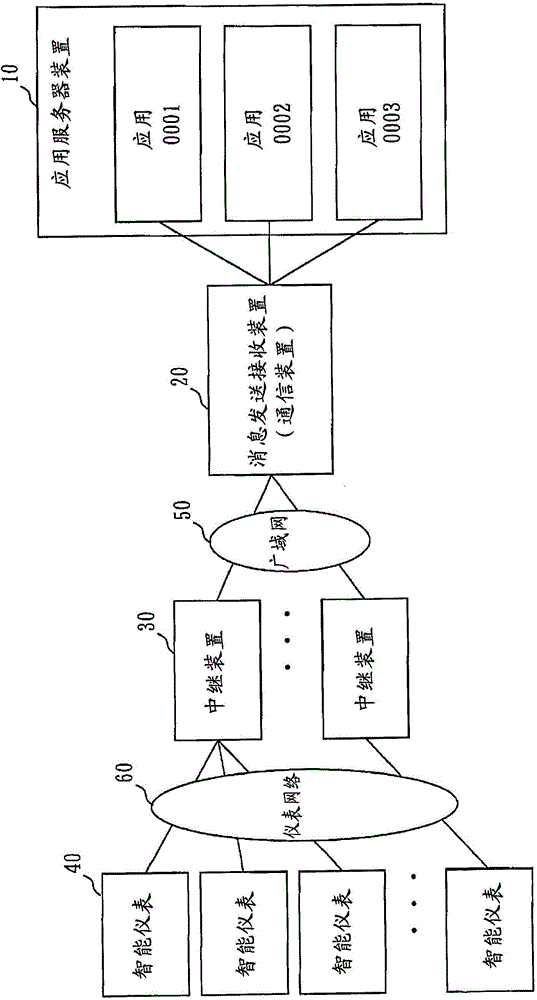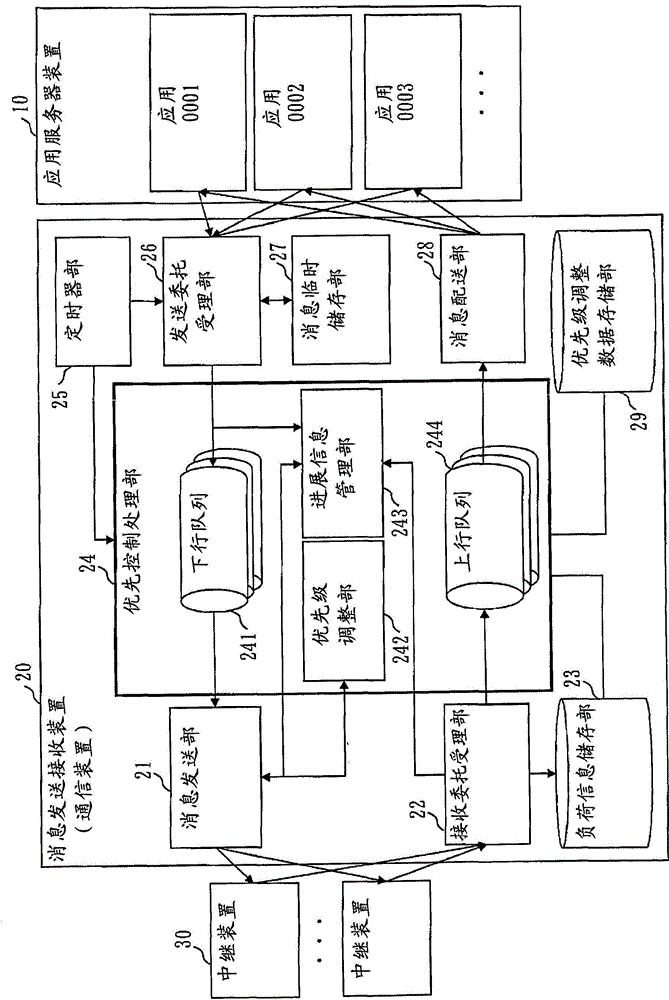Communication device and relay device
A technology of communication devices and relay devices, which is applied in the direction of transmission systems, electrical components, instruments, etc., and can solve problems such as uneven communication traffic
- Summary
- Abstract
- Description
- Claims
- Application Information
AI Technical Summary
Problems solved by technology
Method used
Image
Examples
Embodiment approach 1
[0069] In this embodiment, an automatic meter look-up system for smart meters will be described.
[0070] In this embodiment, the message transmitting and receiving device installed at the center judges the progress of the message communication, and outputs an instruction to adjust the priority to the relay device.
[0071] Then, the relay device adjusts the priority according to the instruction from the message sending and receiving device.
[0072] Through these steps, effective and extremely fine-grained priority control is possible.
[0073] figure 1 It is a schematic diagram of the smart meter automatic meter inspection system of this embodiment.
[0074] exist figure 1 In the automatic meter look-up system for smart meters, smart meters 40, relay devices 30, message sending and receiving devices 20, and application server devices 10 are connected through a tree-structured network.
[0075] The smart meter 40 measures the consumption of electricity, gas, tap water, et...
Embodiment approach 2
[0376] In Embodiment 1, when the message transmission / reception apparatus 20 transmits a priority adjustment message to a some relay apparatus 30, it transmits a priority adjustment message to all the relay apparatuses 30 at the same timing.
[0377] In this embodiment, the operation of the priority adjustment unit 242 to adjust the order of sending priority adjustment messages to the relay device 30 according to the performance and load status of the relay device 30 will be described.
[0378] The configuration of the message transmitting and receiving device 20 of this embodiment is, for example, figure 2 As shown, the structure of the relay device 30 in this embodiment is, for example, image 3 shown.
[0379] In addition, in the present embodiment, in the message transmission / reception device 20 , the priority adjustment unit 242 determines the processing load for processing the downlink message and the uplink message for each relay device 30 .
[0380] Then, the priori...
PUM
 Login to View More
Login to View More Abstract
Description
Claims
Application Information
 Login to View More
Login to View More - R&D
- Intellectual Property
- Life Sciences
- Materials
- Tech Scout
- Unparalleled Data Quality
- Higher Quality Content
- 60% Fewer Hallucinations
Browse by: Latest US Patents, China's latest patents, Technical Efficacy Thesaurus, Application Domain, Technology Topic, Popular Technical Reports.
© 2025 PatSnap. All rights reserved.Legal|Privacy policy|Modern Slavery Act Transparency Statement|Sitemap|About US| Contact US: help@patsnap.com



